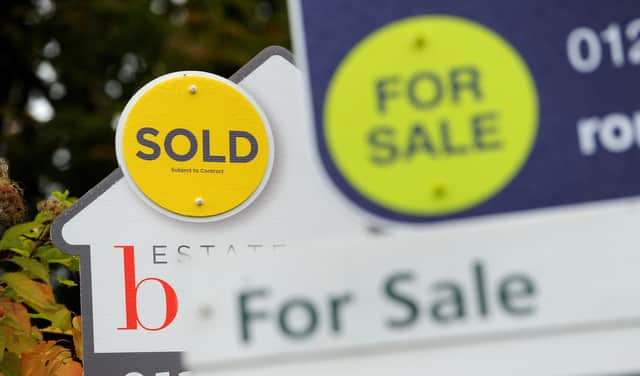Lincolnshire house prices dropped slightly in July


House prices dropped slightly, by 0.5%, in Lincolnshire in July, new figures show.
But the drop does not reverse the longer-term trend, which has seen property prices in the area achieve 9.8% annual growth.
Advertisement
Hide AdAdvertisement
Hide AdThe average Lincolnshire house price in July was £205,451, Land Registry figures show – a 0.5% decrease on June.
Over the month, the picture was better than that across the East Midlands, where prices decreased 5.5%, and Lincolnshire outperformed the 3.7% drop for the UK as a whole.
Over the last year, the average sale price of property in Lincolnshire rose by £18,000 – putting the area 30th among the East Midlands’s 45 local authorities for annual growth.
The best annual growth in the region was in South Northamptonshire, where property prices increased on average by 17.1%, to £365,000. At the other end of the scale, properties in South Kesteven gained 3.2% in value, giving an average price of £224,000.
Winners and Losers
Advertisement
Hide AdAdvertisement
Hide AdOwners of detached houses fared worst in Lincolnshire in July – they dropped 0.6% in price, to £182,453 on average. But over the last year, prices rose by 10.2%.
Among other types of property:
Semi-detached: down 0.2% monthly; up 9.9% annually; £182,453 averageFlats: down 0.2% monthly; up 5.8% annually; £104,936 average
First steps on the property ladder
First-time buyers in Lincolnshire spent an average of £172,000 on their property – £15,000 more than a year ago, and £34,000 more than in July 2016.
By comparison, former owner-occupiers paid £229,000 on average in July – 33.3% more than first-time buyers.
How do property prices in Lincolnshire compare?
Advertisement
Hide AdAdvertisement
Hide AdBuyers paid 4.1% less than the average price in the East Midlands (£214,000) in July for a property in Lincolnshire. Across the East Midlands, property prices are lower than those across the UK, where the average cost £256,000.
The most expensive properties in the East Midlands were in Rutland – £371,000 on average, and 1.8 times as much as in Lincolnshire. Rutland properties cost 2.6 times as much as homes in Bolsover (£145,000 average), at the other end of the scale.
The highest property prices across the UK were in Kensington and Chelsea, where the average July sale price of £1.3 million could buy 13 properties in Burnley (average £101,000).
Factfile
Average property price in July
Lincolnshire: £205,451The East Midlands:£214,169UK: £255,535
Annual growth to July
Lincolnshire: +9.8%The East Midlands: +6.9%UK: +8%
Best and worst annual growth in the East Midlands
South Northamptonshire: +17.1%South Kesteven: +3.2%